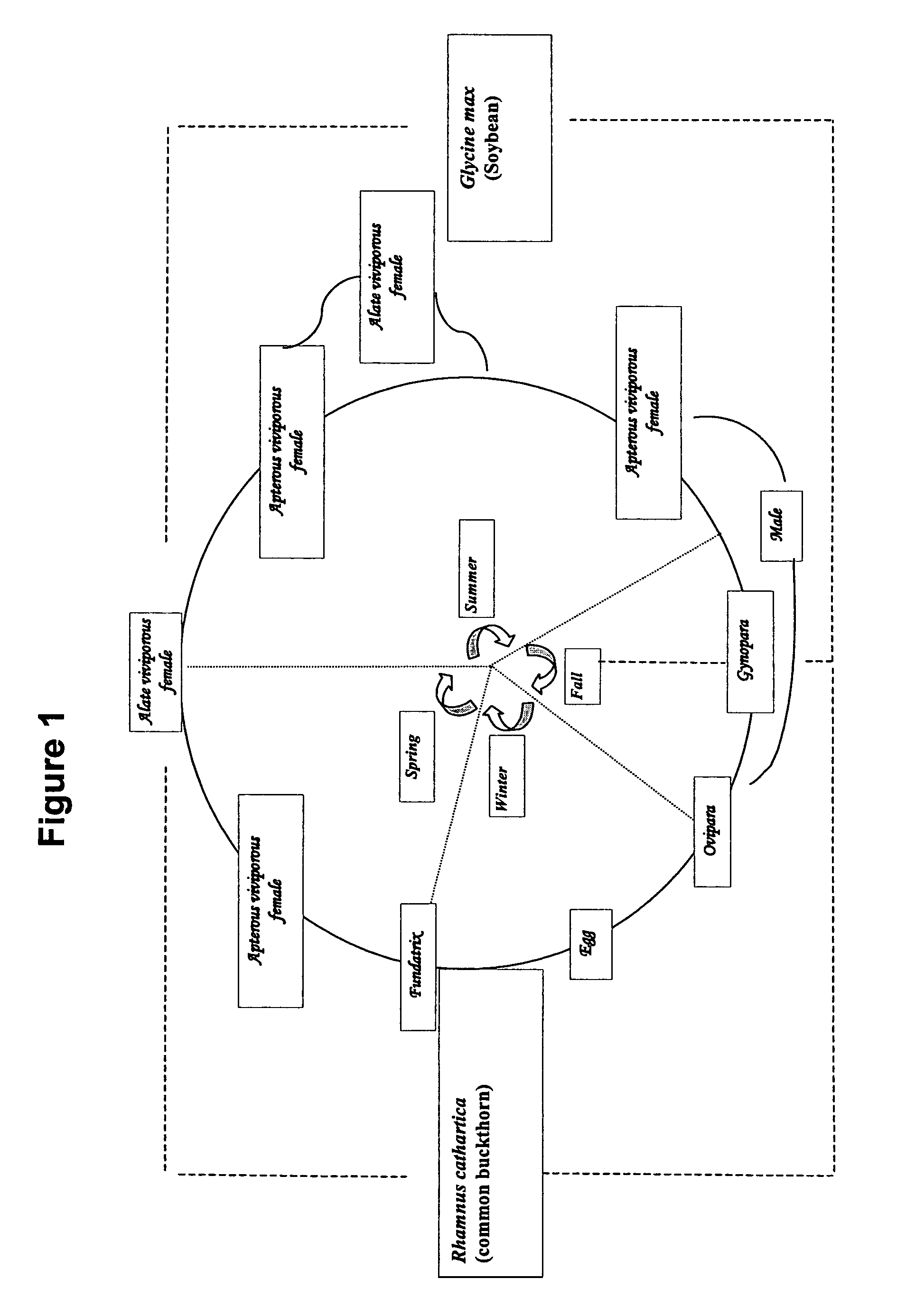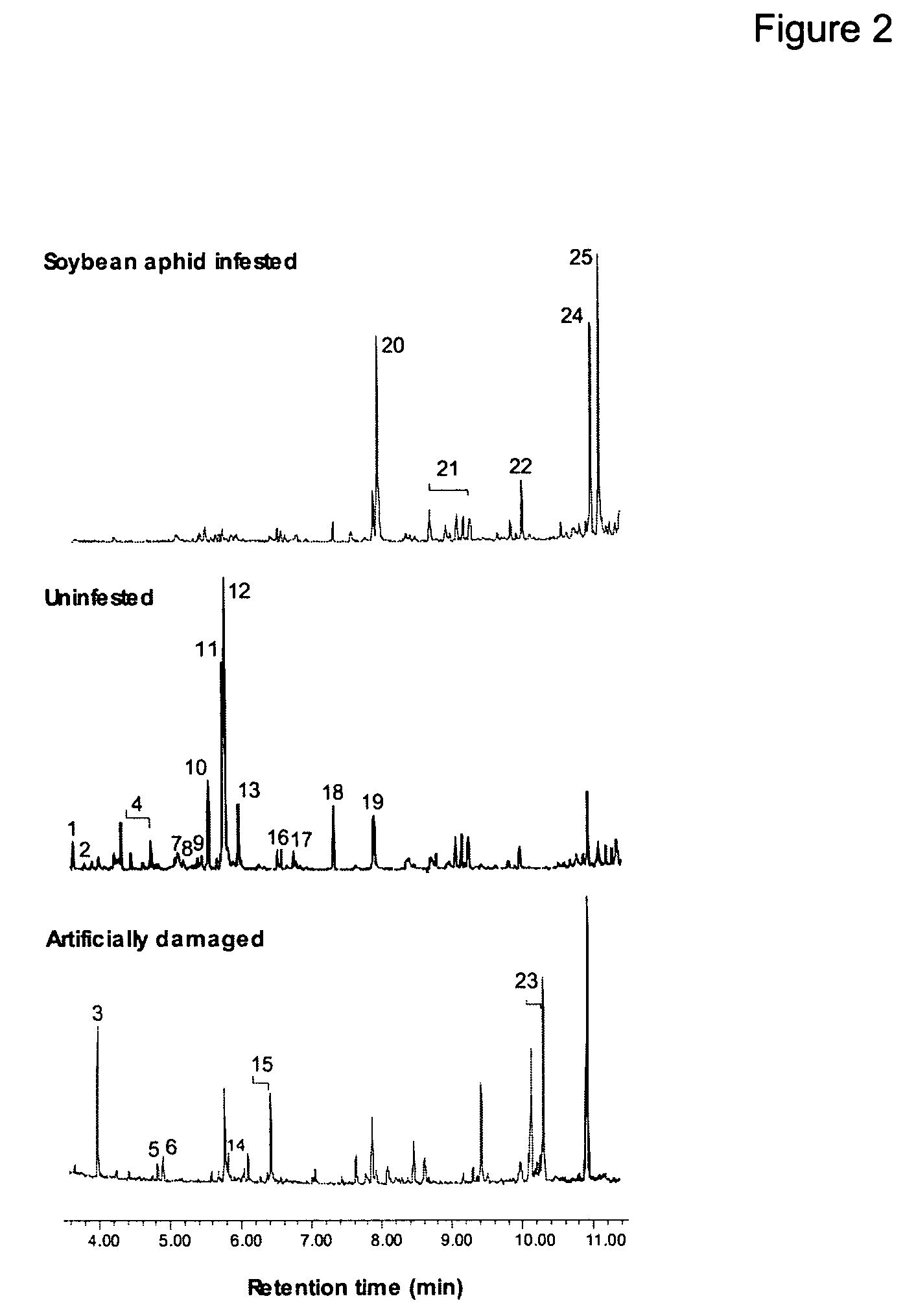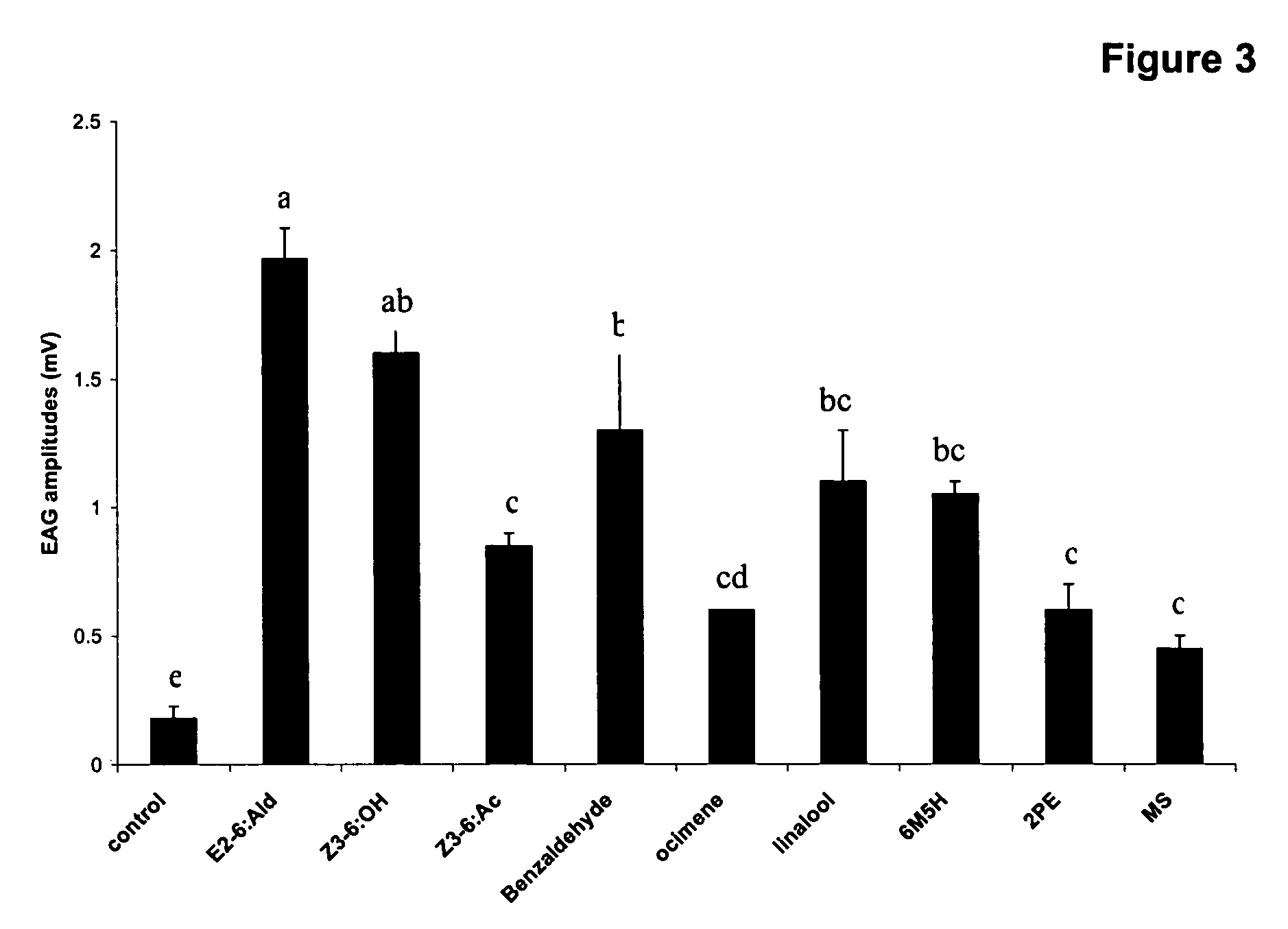Method for soybean aphid population suppression and monitoring using aphid- and host-plant-associated semiochemical compositions
a technology of applied in the field of soybean aphid population suppression and monitoring using aphid and host plant-associated semiochemical compositions, can solve the problems of threatening u.s. soybean production, hundreds of millions of dollars in losses, beneficial insects being killed or repelled, etc., and achieve the effect of suppressing soybean aphid populations and suppressing their success of overwintering populations
- Summary
- Abstract
- Description
- Claims
- Application Information
AI Technical Summary
Benefits of technology
Problems solved by technology
Method used
Image
Examples
example 1
Materials and Methods
[0058]Plants and insects. V1 and V2 stage Soybean plants (Glycine max), Garst Roundup Ready, variety. 80411203, greenhouse grown in small pots, were used when for infestation and entrainment. This stage of soybean plants was also reported when spring winged aphids started to emigrate from their overwintering host plant, buckthorn (Rhamnus cathartica) to the soybean. Soybean aphids collected from soybean fields at the University Farms (Ames, Iowa), were maintained in the laboratory in a cabinet maintained at 25±2° C., with a light cycle of 14 hrs: 10 hrs, L: D., as a stock colony with only parthenogenetically produced females. Adults of C. septempunctata were collected from soybean fields during early summer, and maintained in the same condition as described for soybean aphid colony, with only sugar water (5%) provided.
[0059]Volatile collection from soybean aphid-infested and undamaged soybean leaves. The collection apparatus for volatile compounds comprised two ...
PUM
| Property | Measurement | Unit |
|---|---|---|
| air flow rate | aaaaa | aaaaa |
| flow rate | aaaaa | aaaaa |
| temperature | aaaaa | aaaaa |
Abstract
Description
Claims
Application Information
 Login to View More
Login to View More - R&D
- Intellectual Property
- Life Sciences
- Materials
- Tech Scout
- Unparalleled Data Quality
- Higher Quality Content
- 60% Fewer Hallucinations
Browse by: Latest US Patents, China's latest patents, Technical Efficacy Thesaurus, Application Domain, Technology Topic, Popular Technical Reports.
© 2025 PatSnap. All rights reserved.Legal|Privacy policy|Modern Slavery Act Transparency Statement|Sitemap|About US| Contact US: help@patsnap.com



